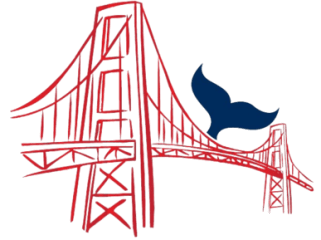Local Seals & Sea Lions
Most of the seals and sea lions in our region, live here year-round. Links are provided to Fact Sheets for additional species information. Sightings, of course, vary from trip to trip, as well as through the seasons. If you want to see all the species possible in this area, you should consider joining us on several expeditions, at different times of the year.
Harbor Seals
- Harbor seals are abundant along the California coast and they are one of the most commonly sighted marine mammals on our trips.
- Harbor seals are the smallest earless seals living off our coast. Adults average 100-300 lbs and grow 5-6 ft in length.
- There are approximately 46,000 harbor seals living along the coast of California.
- Their diet consists of whatever is locally and seasonally abundant – including small fish, squid, and crustaceans.
- Harbor seals spend a great deal of time hauled out on rocky outcrops or beaches. Rarely do they stray more than 5 miles from a haul out site.
- Typically, their fur is light grey in color. In San Francisco, ~40% of harbor seals have ‘rust’ colored fur resulting from deposited iron oxide on their hair shafts.
California Sea Lion
California sea lions are the most commonly sighted sea lion on our trip. Sea lions are members of a group called the eared seals because they have external ear flaps, unlike other seals that just have a hole.
Sea Lions also have articulated flippers allowing them to ‘walk’ on land using their front and rear flippers. A group of California sea lions have made their home right in our backyard at Pier 39. Floating docks have been set aside just for these sea lions.
- Adult males weigh over 750 lbs on average, while females average a mere 250 lbs. Males can also be distinguished by a large crest of fur on top of their heads.
- When California sea lions are on land, they are typically found on beaches or rocky-outcrops. These haul-out sites, or rookeries, are used by many animals and are used for throughout the year as key sites for breeding, pupping and molting.
- They feed on whatever is seasonally abundant (eg. Pacific Hake, rockfish, salmon). They leave their rookeries on feeding trips that typically last 1-6 days.
Steller Sea Lions
In the California current, Steller sea lions are considered threatened. Globally however, this is an endangered species.
They are the largest of the eared seals. Males can weigh over 2,500 lbs and are 2-3 times the size of females. Most of our sightings of Steller sea lions come from the Farallon Islands, where researchers have linked their decline to the San Miguel virus and elevated levels of toxic PCBs.
